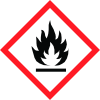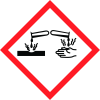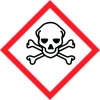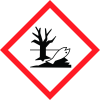Peracetic acid about 38-40%
Merck KGaA
Revision date : 2021-07-28





Note: Ingredients listed on restricted chemical lists
EC/CAS
231-765-0/7722-84-1
Name of the chemical
Hydrogen peroxide
Concentration
>=3-<5%
General Information
Revision date
2021-07-28
Product name
Peracetic acid about 38-40%
REACH No
This
Icons in SDS
Company Information
Company name
Merck KGaA
E-mail address of the competent person responsible for the Safety Data Sheet
TechnicalService@merckgroup.com
GHS Information
Signal word
Danger
Hazard Codes
Hazard statements (CLP)
H242, H301, H314, H318, H335, H400, H410
Hazard statements
Code
Statements
H242
Heating may cause a fire
H301
Toxic if swallowed
H314
Causes severe skin burns and eye damage
H318
Causes serious eye damage
H335
May cause respiratory irritation
H400
Very toxic to aquatic life
H410
Very toxic to aquatic life with long lasting effects
Precautionary statements
Code
Statements
P210
Keep away from heat, hot surface, sparks, open flames and other ignition sources. - No smoking.
P280
Wear protective gloves/protective clothing/eye protection/face protection.
P303+P361+P353
IF ON SKIN (or hair): Take off Immediately all contaminated clothing. Rinse SKIN with water [or shower].
P305+P351+P338
IF IN EYES: Rinse cautiously with water for several minutes. Remove contact lenses if present and easy to do - continue rinsing.
P370+P378
In case of fire: Use ... to extinguish.
P403+P233
Store in a well-ventilated place. Keep container tightly closed.
Section 2
CLP CLASSIFICATION
Self-reactive substances and mixtures (Type D), H242 Organic peroxides (Type D), H242 Acute toxicity, Oral (Category 3), H301 Skin corrosion (Category 1), H314 Serious eye damage (Category 1), H318 Specific target organ toxicity - single exposure (Category 3), Respiratory system, H335 Short-term (acute) aquatic hazard (Category 1), H400 Long-term (chronic) aquatic hazard (Category 1), H410 For the full text of the H-Statements mentioned in this Section, see Section 16.
2.2 Label elements
Labelling according Regulation (EC) No 1272/2008
Signal word
Danger Danger
Hazard statements
H242 Heating may cause a fire. H301 Toxic if swallowed. H314 Causes severe skin burns and eye damage. H335 May cause respiratory irritation. H410 Very toxic to aquatic life with long lasting effects. Reduced Labeling (<= 125 ml) H301 Toxic if swallowed. H314 Causes severe skin burns and eye damage.
Precautionary statements
P210 Keep away from heat, hot surfaces, sparks, open flames and other ignition sources. No smoking. P280 Wear protective gloves/ protective clothing/ eye protection/ face protection/ hearing protection. P303 + P361 + P353 IF ON SKIN (or hair): Take off immediately all contaminated clothing. Rinse skin with water. P304 + P340 + P310 IF INHALED: Remove person to fresh air and keep comfortable for breathing. Immediately call a POISON CENTER/ doctor. P305 + P351 + P338 IF IN EYES: Rinse cautiously with water for several minutes. Remove contact lenses, if present and easy to do. Continue rinsing. P370 + P378 In case of fire: Use dry sand, dry chemical or alcohol-resistant foam to extinguish. P403 + P233 Store in a well-ventilated place. Keep container tightly closed. P280 Wear protective gloves/ protective clothing/ eye protection/ face protection/ hearing protection. P303 + P361 + P353 IF ON SKIN (or hair): Take off immediately all contaminated clothing. Rinse skin with water. P304 + P340 + P310 IF INHALED: Remove person to fresh air and keep comfortable for breathing. Immediately call a POISON CENTER/ doctor. P305 + P351 + P338 IF IN EYES: Rinse cautiously with water for several minutes. Remove contact lenses, if present and easy to do. Continue rinsing.
Supplemental label elements
none none
2.3 Other hazards
This substance/mixture contains no components considered to be either persistent, bioaccumulative and toxic (PBT), or very persistent and very bioaccumulative (vPvB) at levels of 0.1% or higher.

